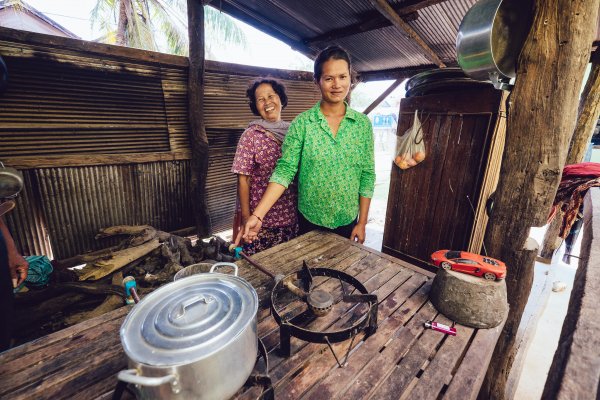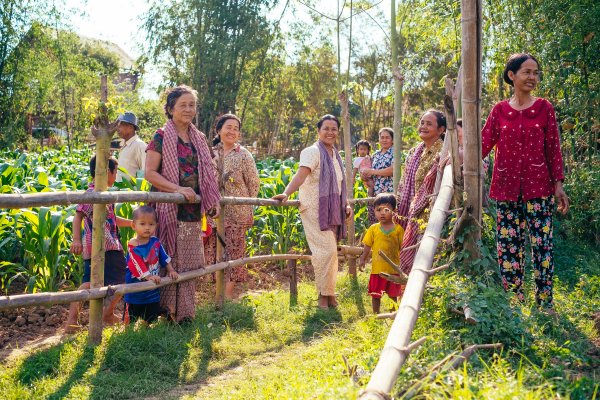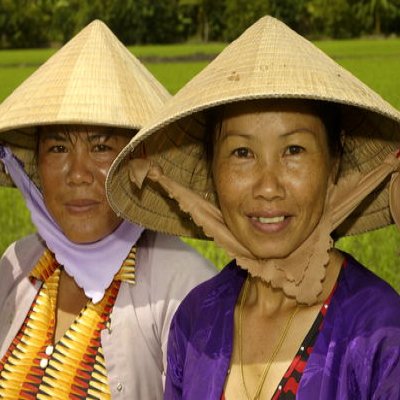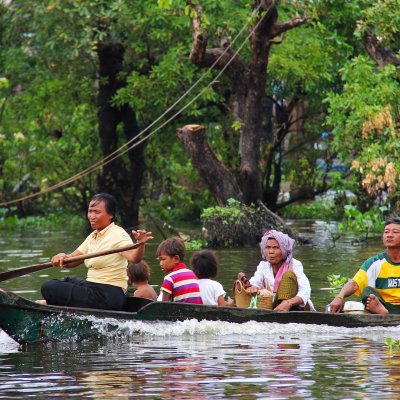Weather and Gender: Empowering Women to Combat Climate Change
Climate change does not affect everyone equally. Poor and disadvantaged groups of people often suffer the most, and women in particular are vulnerable and struggle to adapt. In rural and developing countries like Cambodia, where communities rely heavily on natural resources for food, energy, and income, climate change has a tremendous impact on the daily risks women face.
More often than not, the roles women play greatly differ from those of their male peers; they usually manage the use and supply of most household food and energy, and as such are in a distinctly advantageous position to make alternative energy policy decisions and can offer a complimentary set of solutions to address climate change.
Over the last several years, the Nordic Development Fund (NDF) and the Asian Development Bank (ADB), along with the development organisations SNV and the Institute for Global Environmental Strategies (IGES), have addressed these gender-specific climate change issues by empowering women in Southeast Asian countries to become better positioned as change agents.
Dennis Barbian, Country Sector Leader for SNV’s renewable energy projects in Cambodia, explained that, “this [fact] has been neglected in the past, to see this sort of differentiation. … Based on that realization, [NDF and SNV] recognized that there have been many climate change projects in the Asian region, but very few of them actually focused on or featured women as active agents of change. That is what we want to change with this project.”
The regional project “Harnessing Climate Change Mitigation Initiatives to benefit Women” has helped build capacity for women at three different levels: the development of policy, building of institutional support, and the production of gender inclusive climate change pilot interventions. The project has given tangible results to ministries, government organizations, businesses, and community groups who want gender responsive climate change mitigation, but who have lacked the references to implement such changes on their own.
In Cambodia, the project worked at the policy and institutional level with the Ministry of Agriculture, Forestry and Fisheries (MAFF) as well as the Ministry of Women’s Affairs (MOWA) to put together the first-ever inclusion of climate change mitigation references in the ministries’ gender mainstreaming policy.
Yoy Nita, Undersecretary of State for MOWA’s Gender Mainstreaming Initiatives stated that, “This agenda is very important for the people of Cambodia because over 52 percent of the people of Cambodia are women, but there is only a small percentage of women who are decision makers. Most of the men migrate [for work], so all the responsibility of the house, of the home, belongs to the women.
The ministries developed technical working groups to build capacity and work with line ministries and stakeholders to implement gender integration techniques on a national, subnational, and provincial level. There are now gender representatives that sit on all community committees to directly address issues with children and women. These committees develop community projects such as proper training for women and children in eco-friendly forestry techniques to combat deforestation.
“When climate change disaster comes,” she explained, “women face a lot of problems. Women have to respond to their children, their parents, and they have to think about the house of the family and how to find enough food for their families.” This responsibility gives women a powerful and unique perspective in addressing climate change mitigation. More often than not, they are able to solve issues the male population never truly sees. As Yoy Nita said, the women “always think concretely.”
At the pilot intervention level, the project put policy into practice by implementing women-led biogas enterprises in Vietnam, by integrating women in a variety of functions in the supply chain of advanced biomass cook stoves in Cambodia, and on the development of women-owned production facilities for improved cook stoves in Laos. These projects gave women a tangible role in the actual building, delivery, and sales of the projects—which empowered them on a personal level—but it also gave women an active role in sequestering carbon emissions for themselves while spreading the use of this technology.
Giving women this active role allowed them to address issues that the programs had not even considered previously. Again, Dennis Barbian explained that, “They identified themselves issues that were very close to what they usually do in the agricultural sector. So it started with the obvious biogas, but then they suggested solar water pumping for irrigation, and recently they suggested the use of more agricultural waste, like rice husk and rice straw that is thrown away or burned, for fuel product for the cook stoves.”
Similarly, placing women at the forefront of these business models, which for some meant adjusting base salaries, changing working hours, and reorganizing the distribution model, allowed the women to thrive while maintaining their necessary responsibilities at home. Because these products are built for, sold to, and distributed by women, this resulted in better organization and financial success for the companies.
Though these initiatives proved a resounding success, initial implementation of these pilot projects was met with nervousness and uncertainty among many of the women. When asked to perform tasks which required women to work at important decision making levels alongside men, such as local credit officers, many were shy, uncomfortable, and doubtful of their own abilities. It became necessary to remind them that they were already responsible in their households for managing money and for feeding their families. But, once the proper training and encouragement was implemented with the support of the company and the project, the transition from homemaker to professional was seamless and unquestioned.
The success of this project has brought to light the power that streamlined gender inclusive climate change techniques can have on a local, provincial, and national level. Its success that is not only felt by the environment, but within the business sector as well. “Energy projects,” said Barbian, “are more effective if gender dimensions are taken into account. Women are an asset when they take active roles in addressing climate change – it makes business sense.”
NDF also has a Cambodia-specific climate change and gender project “Integrating Gender Considerations in Climate Change Adaptation” - which partly builds on the lessons learned and experiences gained in the regional project.




